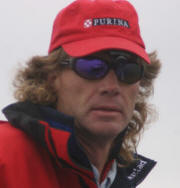Muskie Fishing
Ontario Muskie Fishing
The Next
Bite
|
  Current
Edges Current
Edges
by Pete Maina
Current can be a very important patterning
factor for muskie location. There are two types
of current to be aware of and deal with. The
first is the current associated with flowing
water in river systems and reservoirs. The
larger and more spread out (flooded zones) the
reservoir (dammed river system) is, the slower
the current is likely to be within, yet in
neckdown areas or natural rivers systems,
current can be extreme and very fast. In
general, even in lighter current – there is
often a pattern with fish relating to current
edges – as they are natural travel areas. Often,
the current simply brings food. Especially so in
heavy current, predators don’t want to fight the
current to be there (swim against it) – yet they
like to be very close to be able to see what’s
on the menu. They often hide behind any type of
structure that creates a current block and
eddies; these can be bends in the channel edges
and/or humps or obstructions on the bottom. Pay
special attention to areas having this, or
simply a “rolling” bottom in river channels – as
predators can hide out of the current in the
dips.
Wind-induced current is another factor that few
consider. This is caused by wind – moving the
water (waves) into neck down areas (between
points or islands). In these areas, water stacks
up, resulting in back currents. These edges of
any type of neckdown can be a real locational
key, as often forage gets bunched up as well.
The longer the wind is steady from the same
direction, the more of a factor it can be.
Understand too, that steady wind creates a
seiche effect (good friend Dick Pearson was a
pioneer here in dealing with and writing about
it), which essentially is the simple fact that
water pushed to one end of a lake has to return
in order for the water to remain level.
Understand that a significant steady wind from
the same direction – means that a reverse flow
underwater – back to where the wind is coming
from – simply has to occur. Often, this affects
the predator location on humps and weedlines
this reverse flow hits.
 
 Check out Petes Podcasts here!
Check out Petes Podcasts here!
|